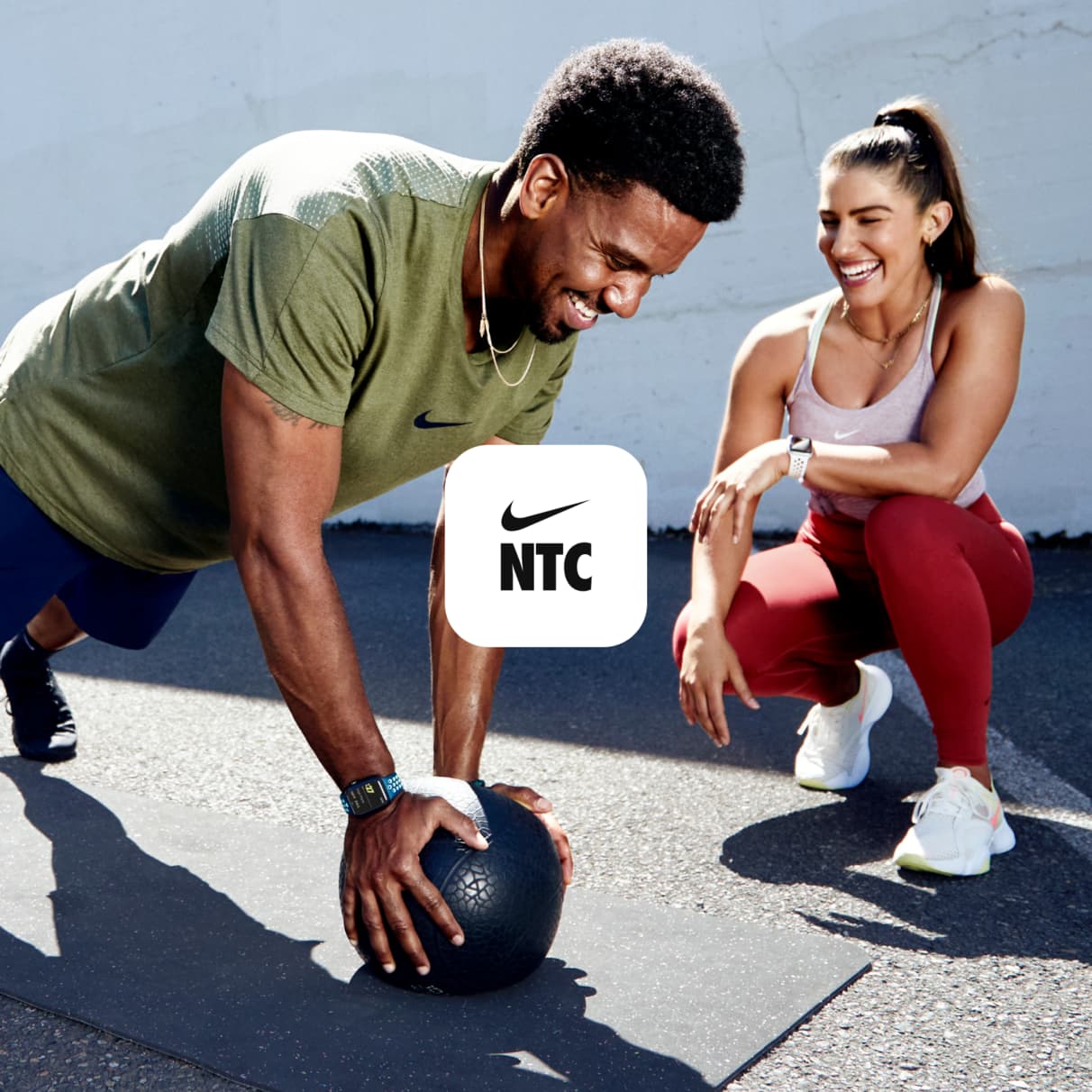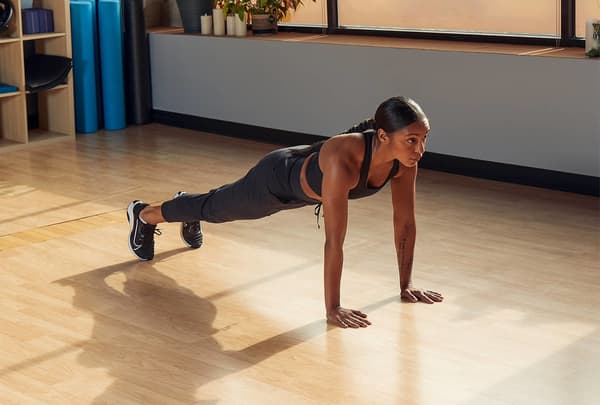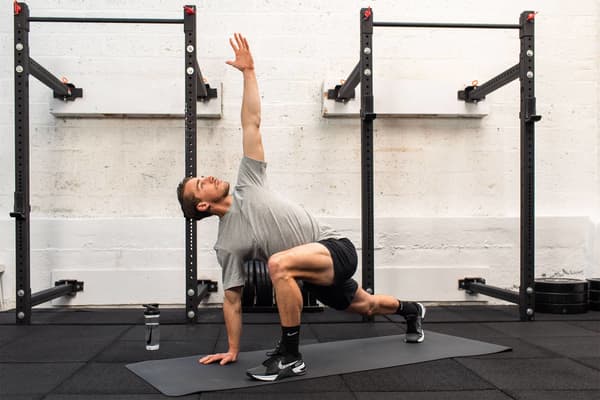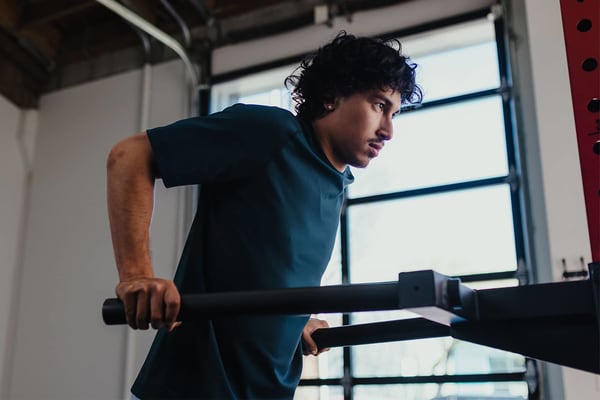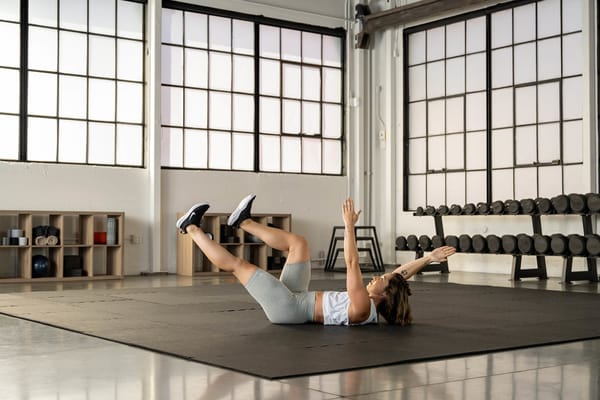7 variaciones de plancha aprobadas por entrenadores
Deportes y actividades
Un grupo de entrenadores personales explica sus variaciones preferidas de plancha para fortalecer core, tren superior y tren inferior a la vez.

Cómo dominar la forma correcta de hacer planchas
Pierre dice que nos imaginemos que hay un hilo atado a la columna vertebral, entre los omóplatos, y que están tirando permanentemente de él para que la parte superior de la columna esté en la posición adecuada (un buen truco es pensar en elevar la columna hacia el techo). Con respecto a los pies, dice que los tobillos deben estar alineados con la base del pie para activar más los músculos del cuádriceps. Para conseguir esta posición, piensa en estirar el pie moviendo los talones hacia la pared posterior.
Alemar también recomienda centrarse en mantener una inclinación pélvica al realizar una plancha tradicional y evitar que las caderas se hundan o que la columna se doble o se curve.
Y que no se te olvide respirar. Añade que no hay que contener la respiración y que debes pensar en flexionar los abdominales de manera simultánea mientras respiras detrás de esa tensión. Puede resultar un tanto raro la primera vez que lo pruebas, pero Alemar explica que te permitirá aguantar haciendo una plancha durante más tiempo.
Variaciones de planchas que los entrenadores prefieren
¿Te atreves a añadir planchas a tu rutina? Alemar y Pierre explican sus ejercicios de plancha favoritos.
1.Plank on Knees
If you’re new to planking and can’t hold a traditional plank for 30 seconds, performing planks on your knees is a great place to start, Alemar said. Starting with this variation will allow you to get acclimated to the movement and learn and reinforce proper movement patterns.
- Start by lying on your stomach with your hands slightly outside your chest.
- With control, push through the palms of your hands as you extend your arms. Be sure to engage your core and maintain a neutral spine.
- If you want, lift your feet off the ground to balance on your knees.
- Hold for 15 seconds. If you’re more advanced, hold for 30 seconds.
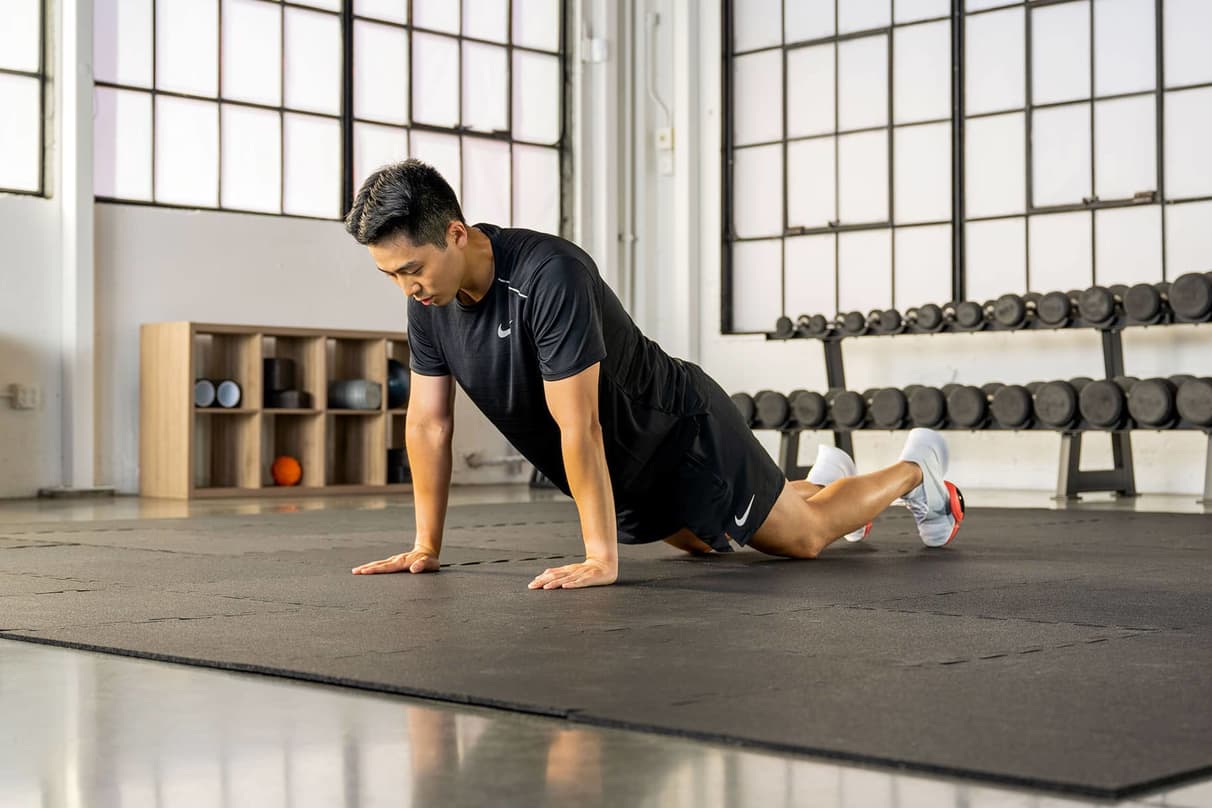
2.High Plank
This is one of the most popular plank variations and rightfully so. This variation places a greater emphasis on the pectoral and serratus muscles, Alemar said. When performing high planks, make sure your wrists are in line with your shoulders or slightly behind to further engage the serratus muscle.
- Start by lying on your stomach with your hands slightly outside your chest and your toes tucked.
- With control, push through your hands and feet, lifting your entire body off the ground simultaneously. Be sure to engage your core and glutes. Your head, spine and legs should be in a neutral position. Your shoulders, elbows and wrists should also be aligned.
- Be sure not to round or arch your back and to keep the palms of your hands flat on the ground.
- Hold for 15 seconds. If you’re more advanced, hold for 30 seconds.

3.Side Plank
This plank variation is excellent for developing stability in your spine while also challenging the hips and obliques, Alemar said.
- Start lying on your side with your body in a straight line from head to toe.
- Depending on your ability, you can either place your forearm on the ground or your hand. If you’re placing your forearm on the ground, make sure that your elbow is in line with your shoulder. If your hand is on the ground, make sure your hand is underneath your shoulder.
- With control, push through your forearm and hand as you simultaneously lift your hips off the ground.
- Your body should be in a straight line from head to toe and your full hand or forearm should be on the ground. Be sure to engage your core and squeeze your glutes.
- Hold for 15 seconds on each side. If you’re more advanced, hold for 30 seconds on each side.

4.Reverse Plank
If you’re bored with your current ab routine, take it to the next level with reverse planks, which not only target your core muscles, but also the glutes, hamstrings and lower back.
- Start seated with your legs bent and your hands behind your glutes with your fingers pointing towards your feet.
- From here, extend your legs, keeping your heels on the ground.
- With control, push through your hands as you lift your glutes and legs off the ground.
- Keep your chin in a neutral position and squeeze through your glutes to maintain proper form.
- Hold for 15 seconds. If you’re more advanced, hold for 30 seconds.

5.Plank Kick Through
Ready to challenge yourself? Try adding plank kick throughs to your routine. This movement is dynamic, and will challenge your core, arm, oblique and hip strength while generating heat throughout your body, Pierre said.
- Start in a traditional high plank position.
- With control, begin to shift your weight to the right side of your body as you rotate to the right, bending your left leg at the knee and lifting your left hand off the ground while simultaneously extending the right leg across the body.
- With control, return to the starting position, then repeat the same movement on the opposite side.
- This counts as one rep. Perform 10 reps.

6.Superman Plank
This plank variation is excellent for all levels, Pierre said. It will challenge your stability in addition to your core and can always be regressed if necessary.
- Start in a traditional high plank position.
- With control, simultaneously raise your left hand off the ground and extend it out in front of you as you lift your right toes off the ground. The leg being lifted does not need to come more than a few inches off the ground. Be sure not to shift your weight to the left or right side of your body.
- With control, place the left arm and right leg back down, returning to the starting position.
- Repeat on the opposite side.
- This counts as one rep. Perform 10 reps.

7.Plank to Squat
If you like more dynamic, diverse movements, consider adding this variation into your routine. It hits all the muscles a traditional plank would in addition to stretching and opening the hips and activating the glute muscles.
- Start in a traditional high plank position.
- With control, either walk or gently jump your feet to the outside of your hands coming into a squat. You can lift your hands off the ground to make the movement more dynamic.
- With control, gently jump or walk your feet back to a high plank position.
- This counts as one rep. Perform 10 reps.

Cómo añadir ejercicios de plancha a tu rutina de ejercicios
¿Te atreves a añadir nuevos ejercicios de core a tu rutina? Alemar señala que la mejor forma de introducir planchas a tu rutina de ejercicios es elegir dos variaciones (preferiblemente aptas para principiantes, a no ser que tengas experiencia haciendo planchas), como la plancha apoyando los antebrazos y la plancha lateral, y hacer tres series de cada una por tiempo. El tiempo puede variar, por ejemplo, pueden ser de 10 o 30 segundos. Ponte a prueba, pero procura siempre mantener la postura correcta.
Si te resulta complicado aguantar una plancha durante 30 segundos, Alemar dice que puedes cambiar el movimiento a las rodillas cuando corresponda o aguantar menos tiempo. En cuanto puedas mantener una plancha durante 30 segundos y hacer tres series, Alemar recomienda aumentar el tiempo en incrementos de 10 segundos hasta que puedas mantenerla durante un minuto. Desde ahí, aconseja empezar a progresar hacia variaciones más difíciles.
Lo interesante de diseñar programas de entrenamiento es que hay una gran variedad de formas de lograr el mismo objetivo. A Pierre le gusta hacer planchas en el calentamiento para activar el core, empezar a generar calor en el cuerpo y, en general, calentar el cuerpo.
Alemar sugiere añadir planchas entre otros movimientos compuestos, es decir, movimientos que trabajan varios grupos musculares a la vez, como tercer o cuarto ejercicio. Por ejemplo, puedes hacer una serie de sentadillas, una serie de remo y, después, una plancha sobre los antebrazos.
Es importante destacar que, para entrenar el core de forma eficaz, deberías realizar también otros tipos de ejercicios de fortalecimiento del core que trabajen otros músculos de la zona, además de incorporar movimientos dinámicos, rotacionales y antirrotacionales a la rutina.
Como cualquier otro tipo de ejercicio, es fundamental no entrenar los músculos en exceso, por lo que Alemar recomienda hacer ejercicios específicos del core dos o tres veces por semana.
Independientemente del tipo de variación de plancha que decidas hacer, no te olvides de la postura. Los hombros, las muñecas y los codos deben estar alineados y debes mantener la columna recta (¡baja esa pelvis!).
Texto: Tamara Pridgett
